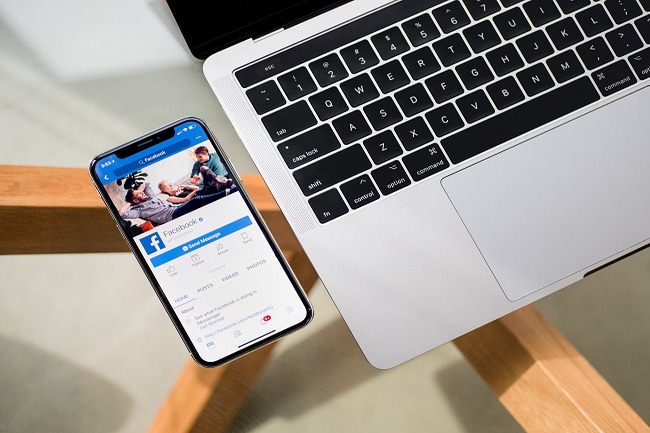Social media has changed the way we live, and interact with each other, and yes, even our businesses. More than 3.6 billion people use social media around the world, making it one of the most popular online activities.
However, creating an effective B2B social media marketing strategy is no small feat. To be effective, brands need to develop data-driven strategies, create appropriate budgets, and measure their success.
When planning your B2B social media strategy, it’s important to consider social media’s impact on the industry as a whole and where other brands are succeeding – and failing.
Which Social Media Platforms Are Best for B2B Brands?
If you’re a marketer looking to focus your efforts on the platforms with the most impact, look no further. This list of the best B2B social media will help you get started and see results.
1. LinkedIn
If you’re in the B2B space, LinkedIn should be your go-to social media network. With over 830 million people (and counting), LinkedIn is the platform for professional networking and lead generation. This has earned LinkedIn a reputation as one of the most trusted social media platforms for software marketers.
In fact, 40% of B2B marketers say that LinkedIn is the most effective tool for generating high-quality leads.
2. Twitter
Twitter has over 465 million monthly active users (and counting) and is a powerful tool. It also allows anyone to engage in real-time conversations. This makes it a great platform for software marketers to connect with leads directly and build relationships.
In fact, 54% of B2B companies have incorporated Twitter into their social media strategy to develop leads and turn them into loyal customers.
3. Facebook
Facebook has 2.9 billion monthly active users (and counting) making it the largest social media platform. It’s a powerful marketing tool that allows entrepreneurs to empathize with prospects, understands their pain points, and connect with them on a personal level.
Since Facebook is not the main B2B social media platform, software marketers tend to ignore it. However, it offers many targeting strategies and capabilities such as lead capture models, custom audiences, targeted audiences, and powerful advertising that B2B customers can leverage to reach and engage. their listeners.
4. YouTube
YouTube is a video and media hosting site with over 2 billion monthly active users (currently). It’s not just millennials who stick to YouTube, even B2B brands are turning to this platform to reach and engage their target audience. Software marketers can connect with their audience, build trust, and generate leads by creating informative videos on YouTube. In fact, 67% of marketers plan to increase their YouTube video marketing efforts in the next 12 months.
5. Instagram
Instagram is one of the most popular social media channels with over a billion monthly active users (and counting). The platform is no longer limited to personal use; Brands are now using Instagram as a marketing tool to influence, reach and engage prospects.
Software marketers can use Instagram to increase brand awareness, drive website traffic, and generate leads by sharing content behind the company’s culture and offerings.
How Do You Target B2B On Facebook Ads?
1. Expand the audience of your Facebook page
Having a Facebook page for your business is a great start for any B2B marketer. The page allows you to connect with all your followers instantly and share your own content, other content you see on the web, interesting news, and important updates.
The problem with your page is that it’s only your followers. If you’re sending to an audience of 500 people, that’s it. Few people outside of your target audience will see your content. Sure, someone might share your message, but that’s not always guaranteed.
With Facebook ads, you can target all kinds of prospects. You don’t need to have a previous connection with them, and with over 1.41 billion users on Facebook, you can be sure that your audience is there. Your ad can appear alongside their newsletter or as sponsored content, depending on what you’ve paid for.
2. Use a custom audience
Although you may be active on Facebook, chances are that no one in your database has seen you on Facebook. It’s good. They shouldn’t. You can still use Facebook ads to add them.
Many people use the same email address for all their social media accounts to make it easier to sign in. Chances are that the same email address is already in your database. Facebook Ads will allow you to download these email addresses and target users who are connected to them. To find a custom audience, go to Advertising. The audience will be listed under the campaign at the bottom. Once you click on the tab, select Custom Audience, and then select Customer List. This will allow you to upload your own email address list.
3. Target B2B type of service
You know you can target people with your location, age, and gender, but did you know you can search for other profile features? Advertising on Facebook also allows you to target prospects based on their listed activities or major life events. This can be of great help in reaching new leads and bringing them into your business.
4. Focus on providing incentives and creating opportunities
B2C marketers like to offer incentives to convince people to click to buy a particular product, but now B2B marketers can generate leads using a similar approach to Facebook advertising.
Instead of you before buying products or services (which they can do), you can make them go to your website and enter their email address. If you offer jobs or products, create a valid media for free tests for your product. This can be used to promote targeted content, such as an upcoming eBook or webinar, to help build your email list.
5. Rediscover your lost path
We’ve talked a lot about reaching new customers and generating leads, but Facebook advertising has another goal: converting lost customers. A customer who looks at your product or service but doesn’t buy anything shouldn’t be wasted. Advertising on Facebook can help you encourage these customers to return to your site.
B2B Facebook Audience You Should Know
Defining and targeting the right audience for your brand is one of the hardest parts of Facebook B2B marketing. Advertisers with experience in creating consumers, a fictional representation of the people who make up the brand’s target audience, can help define the right audience to target.
The audience
This group gives advertisers the ability to narrow down their audience based on gender, location, and age. In this form, “full reflection” allows you to include even more things such as practice, life events, and education for the promotion of the audience. For example, behavioral tracking helps B2B advertisers identify brands, companies, company sizes, etc., to identify the right audience for their brand.
Traditional audience
This group allows advertisers to target audiences to become paying customers. There are four targeting options for the Custom Audience:
Website traffic
With the help of the Facebook Pixel, a line of code that helps measure, optimize, and build audiences for social media, advertisers can create a list of users who have visited their company’s website or page web.
App activity
Businesses with a dedicated app can target users who have logged into the app some time ago. Similar to website traffic, app services help advertisers use retargeting to drive users back to the app and complete or convert.
Customer file
With this option, advertisers can upload a list of Facebook email addresses associated with a user’s account. This helps to create new and targeted custom audience lists that show interest in your brand across all platforms.
Facebook engagement
Audience groups allow advertisers to target people who already interact with their brand, watch videos, and become followers of each other.
Lookalike audiences
This option involves creating a custom audience list based on the brand’s existing target audience. Facebook helps advertisers identify audiences that are interested in their offerings based on what their current audience likes and interacts with.
B2B Audience Targeting Facebook Ads Strategy
Now more than ever, the ability to reach customers across the digital landscape has become one of the most important factors for driving business growth and change.
As we continue to invest in creating products that support advertisers, we are excited to share the launch of our new B2B targeting audience segments worldwide. By combining our scale with the power of our target segments, B2B marketers can reach decision-makers in small, medium, and large businesses. Now when you create a campaign, you can access the following targeting options to get useful results:
- IT decision-makers: The B2B audience segment targets advertising to IT decision-makers based on their job title.
- Business decision-maker titles and interests: B2B audience segments target ads to business decision makers based on their job titles and interests.
- Business decision-makers: The B2B audience segment targets ads to business decision makers in Engineering/IT, Operations, HR, Strategy, or Marketing, depending on their job title.
- New Companies to Work: Managers of companies that have been involved that have been created in the last 6, 12, or 24 months.
B2B Facebook Ad Campaign Examples.
You have to prove that you know what you’re talking about before people take a chance at your product. If you can get people to sign up, whether it’s for a newsletter or an email list, you can show how well you know your space and convince people to try your product.
That’s why many B2B companies use Facebook Ads to provide valuable content, for free, which will show that they have unique information that other competitors do not have.
1. InsightSquared
InsightSquared, a marketing and sales research platform, does a lot with this eBook promotion. They make sure that you get something valuable from Mark Roberge, one of the biggest names in the SaaS market, that you won’t find anywhere else. The “Free eBook” call to action is important, but InsightSquared is also good to use a second call to action for page interest.
2. Linked University
Linked University addresses a common problem: why aren’t you doing more business with your prospects? Once they get your attention, Linked University’s language is to make it easy to turn problems into solutions.
3. Zillow
Zillow, a real estate database company, makes it easy on this level of business plan templates. Their articles tell you exactly what you’re getting and use words like “effective” and “quality” to emphasize the value. This ad has been shared more than 350 times, showing the power of a clear and simple profit plan.
Different Types of B2B Facebook Ads Strategy and Setup Guides
1. Tailor your Ad by targeting a specific audience
Facebook offers some powerful ad tracking options, allowing you to better define your target audience, promotion, and ad creation. This is especially useful if you don’t have a lot of existing customer data to work with.
2. Use Facebook custom audiences to target repeat customers
A Facebook custom audience is a group of Facebook users who know your brand to some extent. This means they’ve already visited your website, interacted with your Facebook page or posts, signed up for your emails, made a purchase, or otherwise interacted with your brand. Basically, Facebook takes the customer data you provide and compares that data to Facebook users, eventually matching your customers with each user. Facebook then created a group of these people, allowing you to target them with different social media.
3. Grow your market by protecting the “team”.
Over time, you will use your Custom Audience to create new segments with similar characteristics to the target. This audience is called the audience.
Audiences seem to be useful because they have a lot in common with your existing audience, so you already know what they like and which ads are performing well. In many cases, you can use the same ad for your target audience as you are serving for other purposes.
This Facebook ad strategy is a great way to get new customers. You already know the interests of these groups, so you can use effective, proven advertising to introduce your brand.
You can customize the similarity of your audience to your previous audience. If you keep it too narrow, you will focus on a smaller but more specific group. If you allow for more diversity between audiences, you’ll target a larger, but broader, audience. Facebook offers a maximum of 500 Lookalike audiences, so you have plenty of room to get creative and experiment.
4. Repost previous visitors to your Facebook or Instagram page
Users who have visited your e-commerce website or interacted with Facebook or Instagram pages in the past are shown. This Facebook ad strategy is a great way to develop the relationships you already have. You can target users based on their actions, such as on Facebook, products added to the cart, or even pages visited.
5. Discover your competitors in the Facebook media library
Attention is the money of advertising, and to know what attracts your audience, you need to know what your ad is targeting. Once you’ve created your Facebook ad strategy and created a campaign to promote your brand, take a look at what your competitors are doing.
In 2018, Facebook worked to increase transparency with advertisers and launched the Facebook Ad Library (now Meta Ad Library). This app works as a repository for current and past Facebook ads run by each advertiser.
Conclusion
Although it may seem like a non-traditional game, combining your Facebook ads with B2B audiences can be a great opportunity to reach more customers.
Remember that B2B deals take longer to close than B2C deals, which means you need to focus more on brand awareness and advertising to develop.




